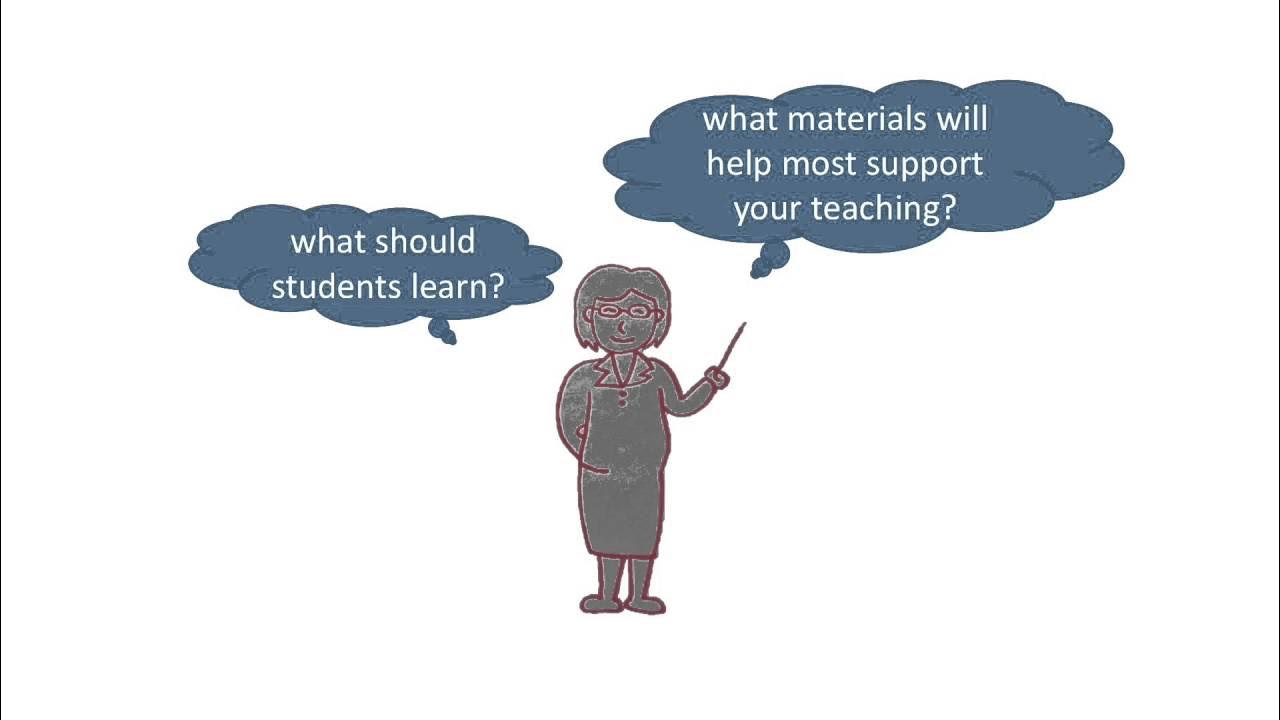7-TKT CLIL: Lesson Planning I
Summary
TLDRThis video script offers a comprehensive guide to lesson planning for the CLIL TKT test, emphasizing the importance of distinguishing between goals, objectives, and outcomes. It uses an inverted triangle model to illustrate the increasing specificity from goals to outcomes, providing examples for clarity. The script also explores the concepts of teaching objectives, learning outcomes, and the significance of differentiation and support in lesson planning. It concludes with recommended resources for further study and preparation.
Takeaways
- 📚 The video discusses lesson planning for the CLIL TKT test, focusing on the distinction between goals, objectives, and outcomes in lesson planning.
- 🔍 An inverted triangle model is used to illustrate the increasing specificity from goals to objectives to outcomes.
- 🎯 Goals are broad, objectives are more specific than goals but less specific than outcomes, and outcomes are the most specific.
- 📈 The specificity of educational targets increases as one moves down the inverted triangle, from general goals to precise outcomes.
- 📝 Examples are provided to clarify the differences, such as teaching about social media's impact on teenagers, with varying levels of specificity.
- 👨🏫 Teaching objectives can be phrased from the teacher's or student's perspective, indicating what the teacher intends to teach.
- 👩🎓 Learning outcomes describe student expectations, what they are supposed to learn and be able to do, and are seen from the student's perspective.
- 🔑 Learning outcomes help teachers fine-tune their strategies and assess students more appropriately, and help students track their progress.
- 📚 Examples of learning outcomes are given for different subjects, emphasizing the specificity required in each case.
- 🤝 Differentiation and support are discussed as important concepts in lesson planning, especially for the TKT CLIL test.
- 🔄 Differentiation involves adjusting content for students' capabilities, while support can be provided before, during, and after lessons.
- 📚 The video suggests resources for further understanding, including the TKT CLIL course module, handbook for teachers, and other relevant texts.
Q & A
What is the main topic of the video script?
-The main topic of the video script is lesson planning for the CLIL TKT (Teaching Knowledge Test) and understanding the differences between goals, objectives, and outcomes in the context of lesson planning.
How does the video script describe the relationship between goals, objectives, and outcomes?
-The video script uses an inverted triangle to illustrate the relationship, with goals being the broadest, objectives being more specific than goals but less specific than outcomes, and outcomes being the most specific.
What is an example of a broad goal mentioned in the script?
-An example of a broad goal mentioned in the script is teaching students about media manipulation in general.
Can objectives be phrased from the perspective of the teacher or the students? If yes, how?
-Yes, objectives can be phrased from both the teacher's and the students' perspectives. For example, a teacher-centered objective might be 'The teacher will teach the impacts of social media on teenagers,' while a student-centered objective could be 'Students will understand the impacts of social media on teenagers.'
What is the difference between a teaching objective and a learning outcome as explained in the script?
-A teaching objective, which can also be called a learning objective, is what the teacher intends to teach and is more specific than a goal but less specific than an outcome. A learning outcome, on the other hand, describes what students are expected to learn and be able to do, and it is seen from the perspective of the students.
How does the script suggest assessing students more appropriately?
-The script suggests that by being more specific about what is being taught, teachers can assess their students more appropriately. This specificity helps in fine-tuning teaching strategies and provides clear expectations for students.
What is the purpose of using learning outcomes in the context of the script?
-The purpose of using learning outcomes is to set clear expectations for students about what they are supposed to learn and be able to do. This helps students track their progress and prepare for assessments.
Can you provide an example of a learning outcome from the script related to social media?
-An example of a learning outcome related to social media from the script is 'Students will be able to assess how social media posts use language to manipulate teenagers.'
What is the main difference between differentiation and support as discussed in the script?
-Differentiation refers to adjusting content for students who are more or less capable within a specific learning outcome or target, which can involve differentiating the input or the output. Support, on the other hand, is a broader term that involves providing assistance to students before, during, and after the lesson, regardless of differentiation needs.
What are some examples of differentiation provided in the script?
-Examples of differentiation provided in the script include pairing students, limiting or focusing the content of the lesson, providing question starters, and offering sentence frames for students to produce sentences.
What are some resources mentioned in the script for preparing for the TKT CLIL test?
-The script mentions the TKT CLIL course module, the TKT handbook for teachers, and other books that provide a general understanding of the concepts and content the test will focus on.
Outlines

This section is available to paid users only. Please upgrade to access this part.
Upgrade NowMindmap

This section is available to paid users only. Please upgrade to access this part.
Upgrade NowKeywords

This section is available to paid users only. Please upgrade to access this part.
Upgrade NowHighlights

This section is available to paid users only. Please upgrade to access this part.
Upgrade NowTranscripts

This section is available to paid users only. Please upgrade to access this part.
Upgrade Now5.0 / 5 (0 votes)





